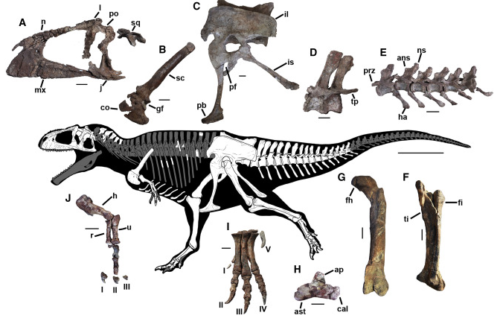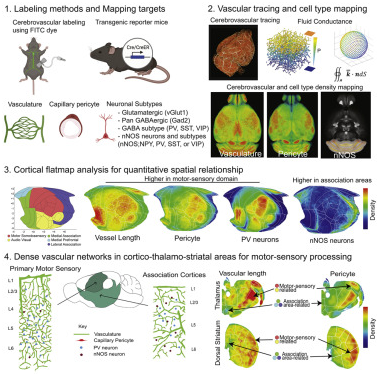大型肉食恐竜の進化と解剖学的特徴に迫る発見。 Discovery provides insight about the evolution and anatomy of big, carnivorous dinosaurs
2022-07-07 ミネソタ大学
メラクセスは、カルカロドンタサウルス類では最大ではないものの、鼻先から尾端まで約36フィート、体重は約9,000ポンドという堂々たる体格の動物である。研究者らは、首の長い竜脚類を含む他の恐竜と一緒に、約9000万年から9500万年前の岩石からメラクセスを発見した。
メラクセスは、古生物学者が南半球で発見したカルカロドントサウルス類の骨格の中で最も完全なものの一つで、頭蓋骨、腰、左右の腕と脚のほぼ全体が含まれています。
<関連情報>
- https://cse.umn.edu/college/news/new-giant-dinosaur-gives-insight-why-many-prehistoric-meat-eaters-had-such-tiny-arms
- https://www.cell.com/current-biology/fulltext/S0960-9822(22)00860-0
新種の巨大肉食恐竜が明らかにした、獣脚類の腕の縮小の収束的進化傾向 New giant carnivorous dinosaur reveals convergent evolutionary trends in theropod arm reduction
Juan I. Canale ,Sebastián Apesteguía,Pablo A. Gallina,Jonathan Mitchell,Nathan D. Smith,Thomas M. Cullen,Akiko Shinya,Alejandro Haluza,Federico A. Gianechini,Peter J. Makovicky
Current Biology Published:July 07, 2022
DOI:https://doi.org/10.1016/j.cub.2022.05.057

Highlights
•Meraxes, a new, giant predatory dinosaur from Patagonia had short arms like T. rex
•Meraxes is the most complete carcharodontosaurid yet from the Southern Hemisphere
•It documents peak diversity of carcharodontosaurids just before they went extinct
•Meraxes documents convergent evolution of short arms among megapredatory theropods.
Summary
Giant carnivorous dinosaurs such as Tyrannosaurus rex and abelisaurids are characterized by highly reduced forelimbs that stand in contrast to their huge dimensions, massive skulls, and obligate bipedalism. 1,2 Another group that follows this pattern, yet is still poorly known, is the Carcharodontosauridae: dominant predators that inhabited most continents during the Early Cretaceous 3, 4, 5 and reached their largest sizes in Aptian-Cenomanian times. 6, 7, 8, 9, 10 Despite many discoveries over the last three decades, aspects of their anatomy, especially with regard to the skull, forearm, and feet, remain poorly known. Here we report a new carcharodontosaurid, Meraxes gigas, gen. et sp. nov., based on a specimen recovered from the Upper Cretaceous Huincul Formation of northern Patagonia, Argentina. Phylogenetic analysis places Meraxes among derived Carcharodontosauridae, in a clade with other massive South American species. Meraxes preserves novel anatomical information for derived carcharodontosaurids, including an almost complete forelimb that provides evidence for convergent allometric trends in forelimb reduction among three lineages of large-bodied, megapredatory non-avian theropods, including a remarkable degree of parallelism between the latest-diverging tyrannosaurids and carcharodontosaurids. This trend, coupled with a likely lower bound on forelimb reduction, hypothesized to be about 0.4 forelimb/femur length, combined to produce this short-armed pattern in theropods. The almost complete cranium of Meraxes permits new estimates of skull length in Giganotosaurus, which is among the longest for theropods. Meraxes also provides further evidence that carchardontosaurids reached peak diversity shortly before their extinction with high rates of trait evolution in facial ornamentation possibly linked to a social signaling role.


